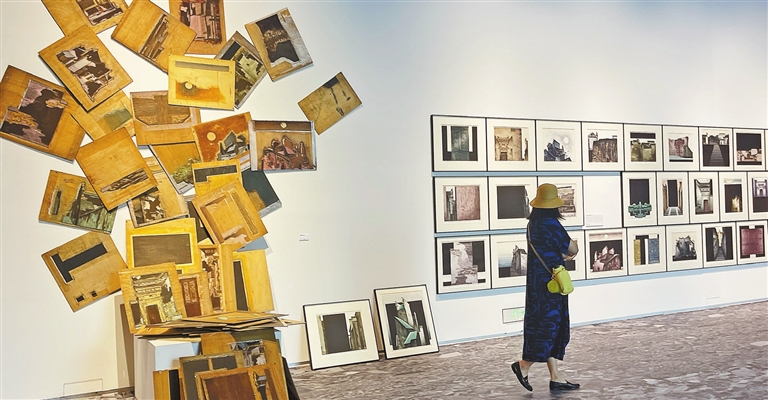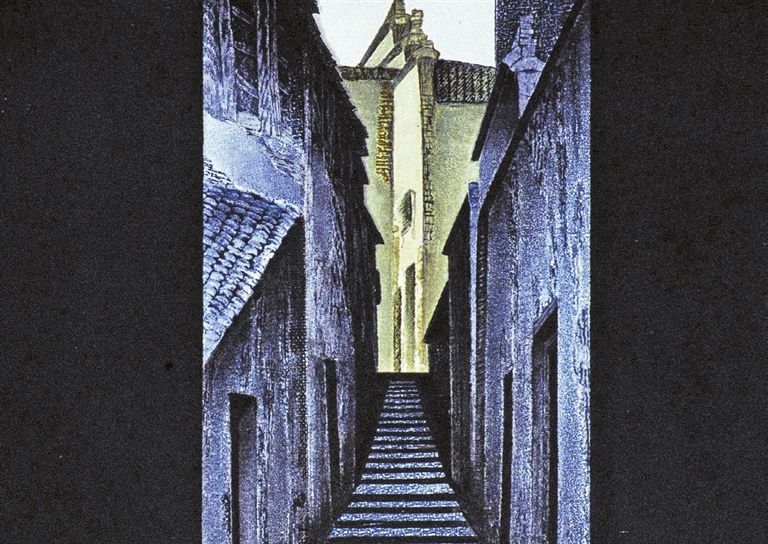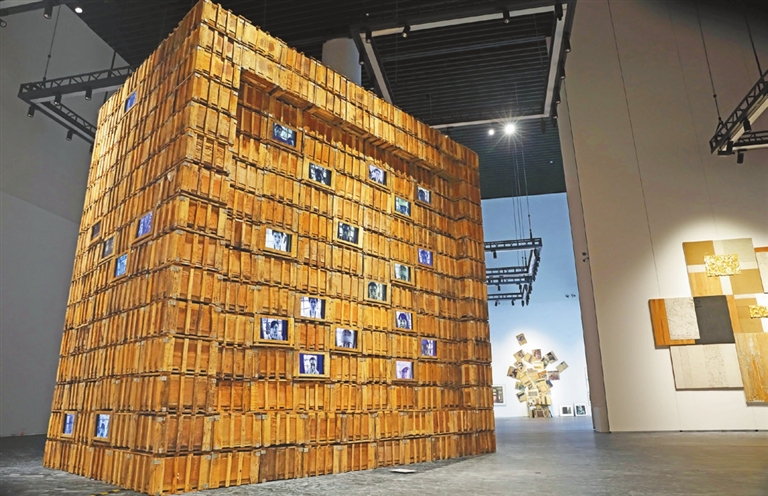


Debra Li debra_lidan@163.com OTHERS at his age and with his achievements will gladly call an exhibition that presents decades of their prized work a retrospective. But not Ying Tianqi, an artist and professor at Shenzhen University, who made his fame in the late 1970s with innovative waterprint woodcut techniques and has since continued to experiment with new ideas and new mediums. Between Friday and Sept. 1, a new exhibition titled “The Echo of Ruins” invites visitors to explore Ying’s artistic endeavors to stay relevant to the common folk and to our times, at the new venue of the Shenzhen Art Museum in Longhua District. Housed in halls 1 and 2 on the first floor of the museum, the exhibition features more than 20 of Ying’s early works, including pencil sketches of portraits, watercolors depicting landscapes and prints; 32 pieces from his famous “Xidi Village Series,” a group of waterprint woodcuts based on the impressions of an ancient village in southern Anhui Province that has entered the collection of the British Museum; over a dozen of paintings in synthetic materials created in recent years; as well as a video and several installations that capture the artist’s reflections on history and our society. “It’s admirable that Ying strives to engage the audience in meaningful dialogues and get them thinking with his artworks,” said Wang Lin, a critic and professor at the Sichuan Fine Arts Institute. “It’s certainly not one of those immersive visual feasts feeding on social media frenzy or a simple display of famous works of past eras. We see paintings here, but the focus of this white-box space is large installations that invite the audience to explore and come up with their own interpretations.” The most conspicuous exhibit is an installation, “Voices,” comprising hundreds of wooden boxes, stacked into the shape of a huge wooden box, about five meters tall, five meters long, and three meters wide. Small screens peek out of each of the four facades facing the audience, on which videos shot in black and white are playing. The videos, recorded 10 years ago, feature residents in Ying’s hometown Wuhu, Anhui, expressing their sentiments about an ancient town being dismantled and rebuilt. In 2014, Ying called on thousands of locals to collect bricks from the ruins of the demolished ancient town so that they could be reused and keep part of the town’s history alive. The wooden boxes had been used to contain those bricks. To echo this centerpiece, the floor of the exhibition hall is covered with a plastic carpet printed with images of broken bricks, redolent of the ruins about to be reborn into a new city. Another piece, called “Zero O’clock Work: Breaking the Black,” is a video capturing the countdown to the year 2001 at the gate of Shenzhen University, where Ying and some 500 college students together smashed four large pieces of glass painted all in black. “Everyone at the turn of the century felt the excitement, anticipating a new era with great things,” Ying recalled. “China has a long glorious history, but its common folk also had a lot of sufferings. At that moment, smashing the black glass represented an attitude of starting anew and hope for the better.” Ying also kept a record of those broken glass fragments in the form of four waterprint woodcuts. The exhibition also presents Ying’s most famous works, the “Xidi Village Series,” created in the late 1980s, alongside the original wooden blocks. Unlike traditional artists, Ying incorporated sand, cloth, hairs, and other materials into his wooden blocks, producing images of rich texture and unique beauty. He also boldly employed large uninterrupted blocks of black, green, and other shades to give his works a modern look. The series, using an impressionist approach to bring out the aesthetics of traditional Anhui-style architecture, went on exhibitions in China, Japan, and France and has since been taken into the collection of museums and art galleries around the world. His works also helped to propel Xidi Village into the limelight, which was included on the UNESCO World Heritage List alongside Hongcun Village in November 2000. Ying, born in 1949, whose talent in art was first recognized in his 20s, worked in the Department of Printmaking at the Central Academy of Fine Arts in Beijing from 1985 to 1986. You Jiang, the curator of the new exhibition, said Ying never considered himself an avant-garde artist. “Ying is always pondering about the traditional and the modern; he’s always observing society and asking questions with his artworks; he’s always in touch with the common folk; and he’s striving to stay relevant to our times,” he concluded. The museum will hold workshops and lectures to engage the audience on the sideline of the exhibition, which spans the summer vacation and is expected to draw a large following. | 
